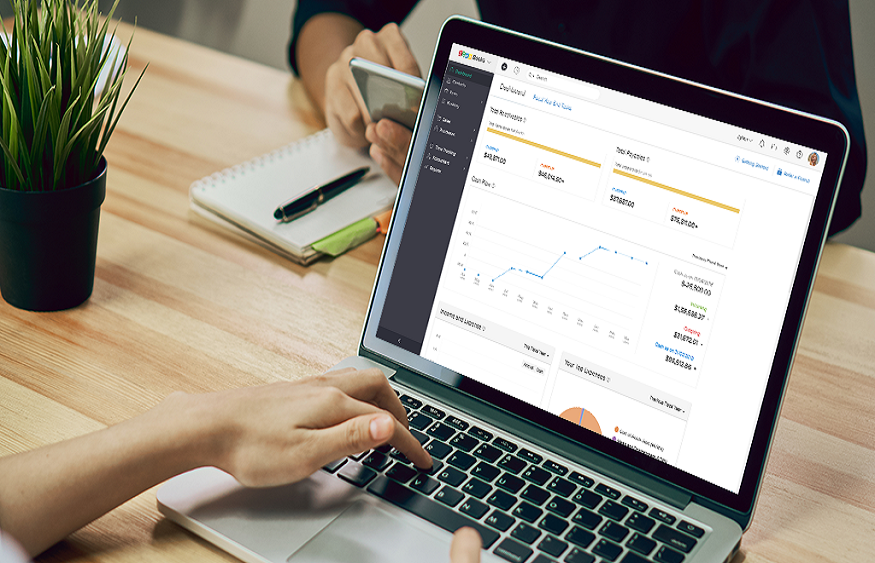Sustainable Roofing: Incorporating Environmental Considerations with the Help of Roofing Takeoff Software
In today’s fast-paced world, businesses increasingly recognize the importance of sustainability and environmental responsibility. As the effects of climate change become more evident, companies are seeking innovative ways to reduce their ecological footprint. Construction is one industry that significantly impacts the environment, specifically roofing. Roofing projects consume substantial amounts of resources and can generate significant waste. However, with the advent of roofing takeoff software and building estimating software, businesses can now incorporate environmental considerations into their roofing projects more effectively than ever before.
The Environmental Challenge in Roofing
Traditional roofing practices often prioritize cost and efficiency over environmental sustainability. The materials used, such as asphalt shingles, harm the environment due to their high carbon footprint and limited recyclability. Additionally, improper installation techniques and inadequate insulation can result in energy loss, further contributing to environmental degradation.
Furthermore, the lack of accurate estimations and inefficient planning can lead to excess material waste and unnecessary rework, which only exacerbates the ecological impact of roofing projects. It is imperative for businesses in the construction industry to address these challenges and find solutions that align with their sustainability goals.
Enter Roofing Takeoff Software
Roofing takeoff software and building estimating software comprehensively solve these environmental challenges. These advanced digital tools empower businesses to make informed decisions, streamline operations, and minimize waste. Let’s delve into the ways in which roofing takeoff software can help companies embrace sustainability in their roofing projects:
1. Accurate Material Estimation
One of the key benefits of roofing takeoff software is its ability to estimate the required materials for a roofing project accurately. The software enables precise measurements and calculations by leveraging digital blueprints and aerial imagery. This eliminates the need for manual estimation, which often leads to errors and excess material orders.
Businesses can significantly reduce waste and minimize their environmental impact by optimizing material usage. Moreover, the software allows for efficient planning, ensuring that the right amount of materials is ordered, reducing the need for excess transportation, packaging, and disposal.
2. Enhanced Energy Efficiency
Roofing takeoff software also facilitates the integration of energy-efficient solutions into roofing projects. By analyzing the digital models and incorporating relevant data, businesses can evaluate the thermal performance of roofing materials and insulation options. This enables them to choose materials that maximize energy efficiency, reduce heat loss or gain, and lower the building’s carbon footprint.
Additionally, the software enables accurate calculations of the roof’s solar potential, facilitating the integration of solar panels or green roof systems. This further enhances energy efficiency and promotes the use of renewable energy sources.
3. Waste Reduction and Recycling
By utilizing roofing takeoff software, businesses can minimize waste generation during construction. Accurate material estimation ensures no excessive ordering, reducing the amount of unused materials in landfills. Furthermore, the software enables better inventory management, preventing unnecessary stockpiling and potential waste.
Moreover, the software’s integration with recycling databases allows businesses to identify and source environmentally friendly materials. This promotes using recycled and recyclable materials, further reducing the ecological impact of roofing projects.
4. Streamlined Project Management
Efficient project management is crucial for minimizing environmental impact. Roofing takeoff software offers comprehensive project management capabilities, enabling businesses to optimize workflows, track progress, and ensure timely completion of projects. By streamlining operations, businesses can reduce energy consumption, minimize waste, and improve overall project efficiency.
The Benefits of Sustainable Roofing
Sustainable roofing benefits the environment and offers numerous advantages for businesses. Let’s explore some of the key benefits that come with incorporating environmental considerations into your roofing projects:
- Enhanced Reputation and Brand Image: In today’s socially conscious world, consumers increasingly gravitate towards brands that demonstrate a commitment to sustainability. By embracing sustainable roofing practices, you can enhance your reputation as an environmentally responsible business, attracting eco-conscious customers and stakeholders.
- Cost Savings: While the initial investment in sustainable roofing materials and technologies may be higher, the long-term cost savings can be substantial. Energy-efficient roofing solutions reduce heating and cooling expenses, lowering utility bills. Additionally, businesses can reduce procurement costs and disposal fees by minimizing waste and optimizing material usage.
- Regulatory Compliance: Many jurisdictions have implemented environmental regulations and standards to promote sustainable practices in the construction industry. By adopting sustainable roofing techniques, you can ensure compliance with these regulations, avoiding potential fines and penalties.
Conclusion
Sustainable roofing practices are becoming increasingly important for businesses to align their operations with environmental considerations. With the help of roofing takeoff software and building estimating software, companies can enhance their sustainability efforts while minimizing waste and improving efficiency.
Are you ready to embrace sustainable roofing practices? Contact Estimating Edge today to learn how our roofing takeoff software can help your business incorporate environmental considerations into your roofing projects. Together, let’s build a brighter and more sustainable future.





